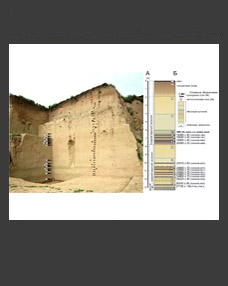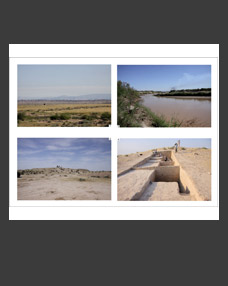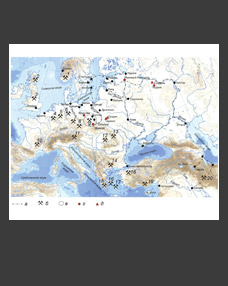Aleksandr V. Borisov,* Roman A. Mimokhod**
* The Institute of Physical-chemical and Biological Problems of Pedology of the Russian Academy of Sciences, Pushchino, Russia (avborisovv@gmail.com)
** The Institute of Archaeology RAS, Moscow, Russia (mimokhod@gmail.com)
Keywords: Bronze Age, desert-steppe zone, climate, aridity, economic pattern.
This paper is an attempt to consider historical processes in Eastern European desert-steppe zone in the Bronze Age in the context of correlation between the economic pattern and the changing environment. Geographically the study is confined to the southern part of the Volgograd oblast, almost the entire Republic of Kalmykia, the eastern districts of the Stavropol Region and the northeastern districts of the Republic of Daghestan, and chronologically to the late Middle Bronze Age, the post-Catacomb period and the early Late Bronze Age. Up to now palaeoecological reconstructions have not been taking into account the influence of the variation of annual precipitation on the economy of early societies. A conjugate analysis of the evolution of the Bronze Age cultures and the dynamics of the environment enabled us to ascertain that the survival of early pastoralists in the desert-steppe zone depended primarily on climate conditions of the cold period, i.e. on the amount and forms of winter precipitation. The increasing climate aridity in the desert-steppe zone around the turn of the 2nd millennium BC was due to the intensification of the winter anticyclone having led to the contraction of the volume of precipitation in the cold year period. In these conditions cold dry weather with a thin snow layer or its total lack particularly suitable for winter grazing sets in. It was against such a climatic background that the Lola culture based on small cattle, sheep and goat keeping evolved. The reverse process, i.e. the decrease of the winter anticyclone in the 18th‑17th centuries BC, led to the increase of precipitation, frequent snowstorms, ice-covered grass, the formation of ice crust and the thickening of the snow layer. In such conditions the number of days suitable for grazing decreases and consequently the livestock is subject to weakening and sicknesses which may bring about its total loss. It seems likely that this was the reason of a gradual deterioration of post-Catacomb cultures of the desert-steppe zone. On the whole, the well-known gaps in the desert steppe exploitation in the Bronze Age correlated with the optimization of natural conditions while the period of the increasing climate aridity saw the heyday of early pastoralism.







